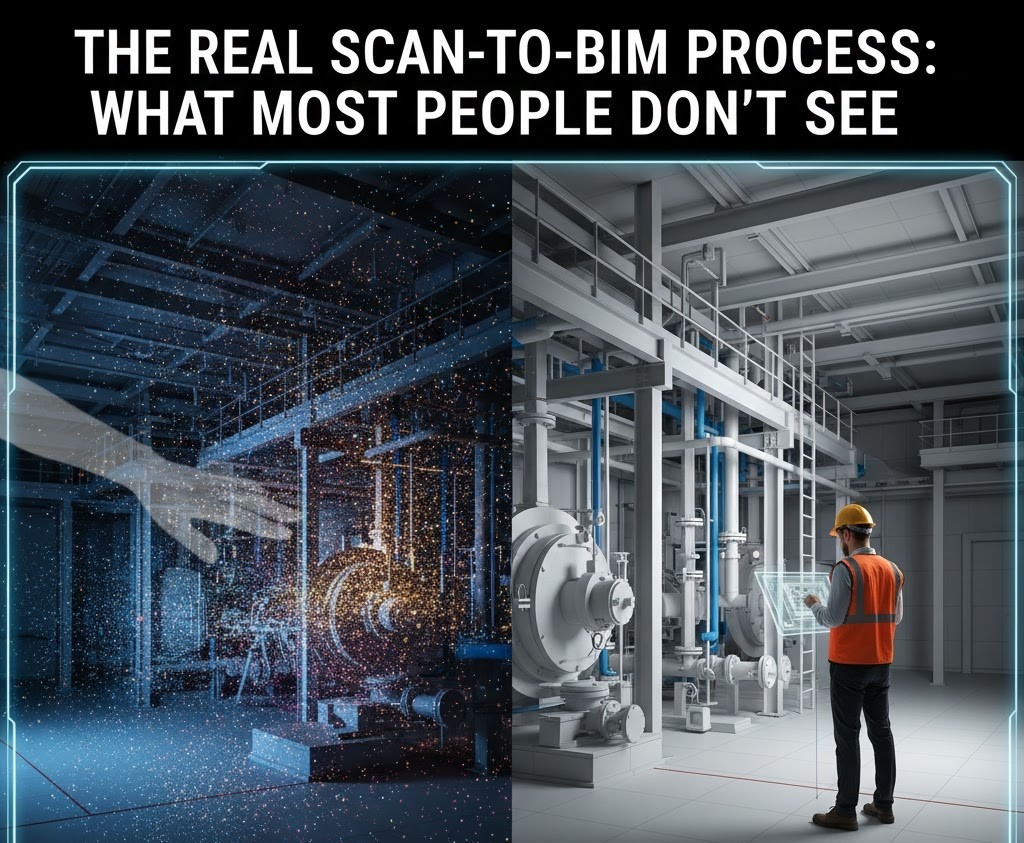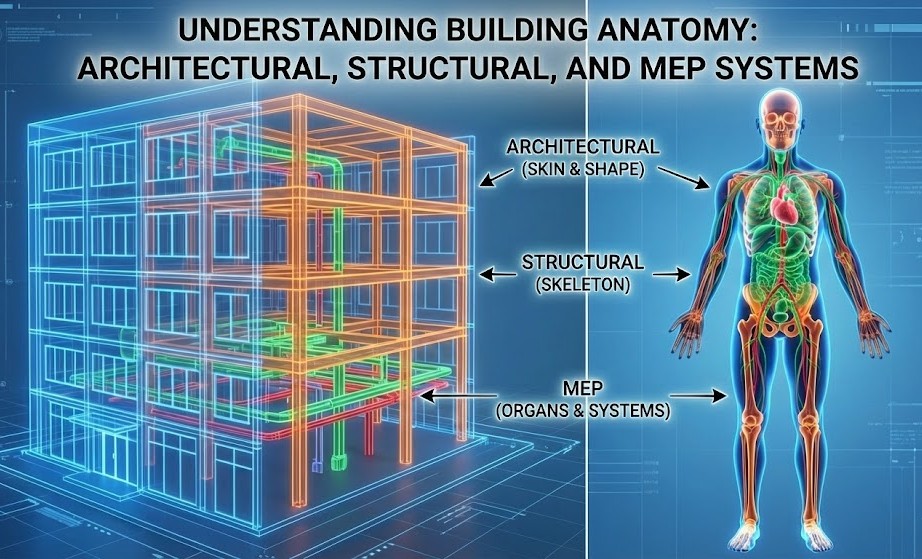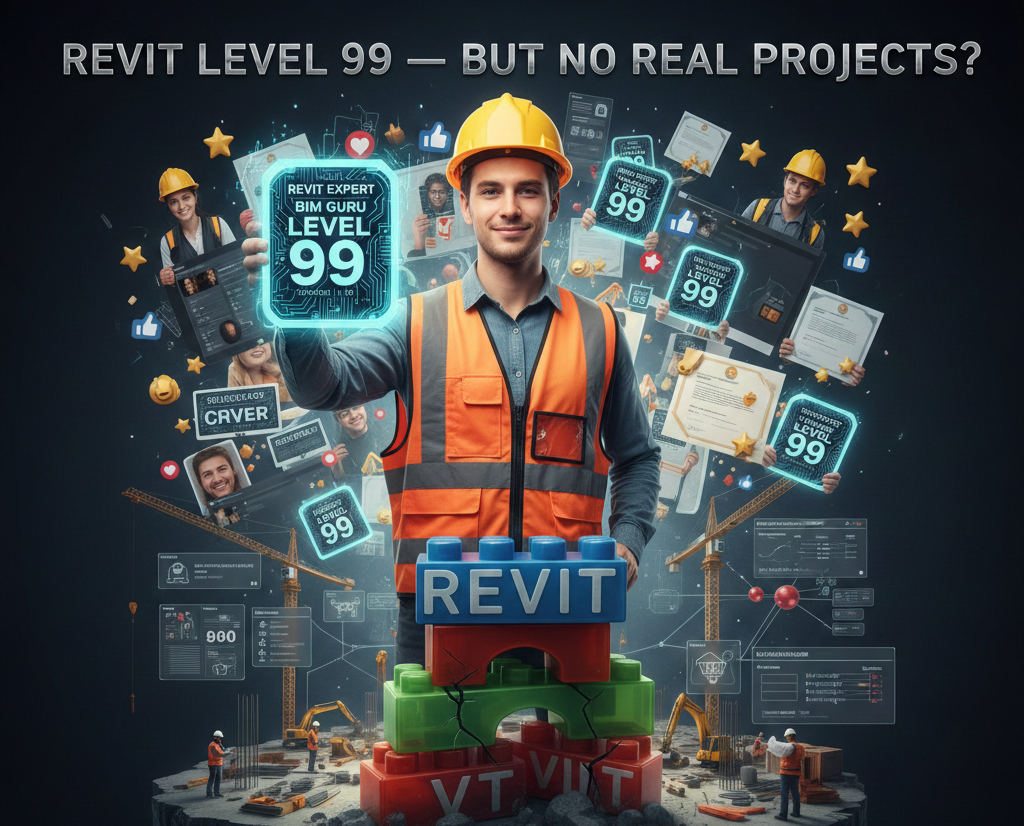
Author: Devika R
September 23, 2025
8 min read
Introduction
Building Information Modeling (BIM) has transformed how buildings are designed, coordinated, and constructed. From early planning to final execution, BIM ensures better collaboration among architects, engineers, contractors, and owners. But not all BIM service providers deliver the same value. Some focus only on modelling, while others handle visualization, clash detection, cost estimation, and even training.
For learners at BIM Cafe Learning Hub and professionals evaluating BIM providers, understanding the differences is essential. This blog compares BIM services across key dimensions—workflow, stakeholder coordination, visualization, industrialized construction, training, and pricing—so you can make informed choices.
What Exactly is BIM?
Building Information Modeling (BIM) is more than 3D modelling. It’s a digital process that captures both the physical and functional characteristics of a building. The power of BIM lies in how it serves different project stages and stakeholders:
- Planning – feasibility studies, site analysis, project scope.
- Designing – conceptual design, schematic layouts, design development.
- Modelling – 3D/4D models with levels of development (LOD).
- Rendering – photorealistic visuals for client buy-in.
- Detailing – fabrication details, shop drawings.
- Execution – site coordination, clash detection, scheduling, BOQs.
Each stage reduces uncertainty, improves collaboration, and saves cost. A provider that covers this full lifecycle brings more value than one focusing only on isolated parts.
Dimensions That Differentiate BIM Service Providers
Not every provider offers the same depth of expertise. Here are the most important dimensions to compare:
| Dimension | What to Evaluate | Why It Matters |
| Workflow Stages Covered | Do they only do modelling, or full planning → execution? | Full lifecycle coverage reduces rework and delays. |
| Stakeholder Support | Do they support architects, structural engineers, MEP, contractors? | Multi-disciplinary support ensures fewer clashes. |
| Visualization & Detailing | Do they provide renderings, VR/360°, detailed fabrication models? | Helps clients visualize projects and avoid errors. |
| Digital Transformation | Are they adopting industrialized construction, automation, digital twins? | Future-ready providers save time and improve sustainability. |
| Training & Standards | Do they help build in-house BIM skills and follow standards like ISO 19650? | Ensures consistency and long-term capability. |
| Pricing Models | Fixed, hourly, milestone-based, or subscription? | Transparency helps avoid hidden costs. |
Comparing BIM Services Across Providers
1. Workflow Coverage
- Limited-Scope Providers: Many small firms handle only modelling and detailing (LOD 200-300). While this is cost-effective, it often leaves coordination and execution issues for clients.
- Full-Cycle Providers: Some providers manage planning, design, modelling, rendering, detailing, and execution. This holistic approach reduces design changes during construction but usually costs more upfront.
👉 Tip for learners: Ask providers what LOD they deliver (LOD 100–500). For most projects, LOD 350–400 is the sweet spot between cost and usability.
2. Stakeholder Support
Each discipline in AEC has unique BIM needs:
- Architects need models that emphasize design intent and aesthetics.
- Structural Engineers focus on stability, reinforcements, and load paths.
- MEP Engineers ensure accurate placement of ducts, pipes, and wiring.
- Contractors depend on clash-free models, cost data, and buildability checks.
Some providers specialize in one discipline, while others integrate across all. Integrated providers usually deliver better clash detection and coordination, reducing costly site errors.
3. Visualization & Detailing
Visualization is where service providers differ the most.
- Basic Firms: Provide 3D Revit models with limited textures.
- Advanced Providers: Offer renderings, VR walk-throughs, and 360° galleries that clients can explore. They also produce fabrication-level detailing for contractors.
High-quality visualization boosts stakeholder confidence and often secures faster client approvals.
4. Digital Transformation & Industrialized Construction
The AEC industry is moving towards industrialized construction, where buildings are designed for prefabrication and modular assembly.
- Traditional BIM Providers: Use BIM primarily for design documentation.
- Digitally Advanced Firms: Incorporate parametric design, automation, modular construction, and digital twin technology.
For clients, this means faster timelines, reduced waste, and better sustainability outcomes.
5. Training & Standards
Some service providers stop at delivering models. Others invest in BIM training and align projects with international standards like ISO 19650.
- Training ensures that project teams can manage BIM internally.
- Standardized workflows improve collaboration across geographies.
For learners at BIM Cafe, understanding these standards gives you a strong edge in the job market.
6. Pricing Models
Transparency in pricing is another key differentiator. Providers may use:
- Fixed Price – for well-defined scopes.
- Hourly Billing – flexible but harder to control costs.
- Milestone Payments – linked to project stages.
- Subscription / Retainer – ongoing support for large portfolios.
When comparing providers, ask:
- How many revision rounds are included?
- Are clash detection sessions part of the scope?
- Do they deliver open formats (IFC, NWC) or only proprietary files?
Real-World Scenario: Two Providers Compared
Project Example: Mid-Size Office Building
- Provider A (limited scope) delivers only modelling at LOD 300. Costs are lower, but during construction, clashes between ducts and beams cause delays and cost overruns.
- Provider B (full-cycle) manages planning through execution, includes VR visualization and clash detection. Initial fees are higher, but construction runs smoothly, saving time and change orders.
Lesson: A slightly higher upfront investment in BIM services often prevents larger downstream losses.
Checklist for Choosing the Right BIM Provider
Here’s a practical checklist for BIM Cafe learners and industry professionals:
✅ Clarify workflow – Which stages (planning, modelling, detailing, execution) are covered?
✅ Ask about LOD – Does the provider specify levels of development?
✅ Check stakeholder integration – Do they coordinate architecture, structure, and MEP?
✅ Assess visualization – Do they provide VR/360° walkthroughs or only static models?
✅ Verify standards – Are they aligned with ISO 19650 or national BIM standards?
✅ Understand pricing – What’s included, what’s excluded, and how are revisions handled?
✅ Look for training options – Do they help build your in-house BIM capability?
Why This Matters for BIM Cafe Learners
At BIM Cafe Learning Hub, we train learners to not only use BIM tools but also to evaluate BIM services strategically. Knowing how providers differ prepares you for:
- Smarter vendor selection as project managers.
- Better collaboration as engineers and architects.
- Higher employability since employers value professionals who understand both tools and workflows.
Conclusion
BIM is no longer optional—it’s the backbone of modern design and construction. But not all BIM services are created equal. The difference lies in workflow coverage, stakeholder support, visualization quality, digital readiness, training, and pricing transparency.For learners at BIM Cafe Learning Hub, understanding these dimensions means you can both choose better providers and position yourself as an informed professional in the industry.




